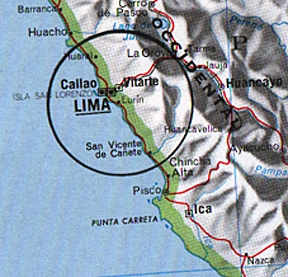
May 6, 2001 Caral, Peru - Archaeologists reported in the April 27, 2001 journal Science that the mounds and ruins in the Supe Valley 120 miles north of Lima are as old as the pyramids. Now Caral, Peru is the oldest city in the Western Hemisphere. Even though the site and seventeen others were first discovered in 1905, age was never precisely dated. Now Jonathan Haas, Curator of Anthropology at the Field Museum in Chicago and co-author of the report, says that disintegration of carbon in plant fibers in the ruin walls definitely date between 2627 B.C. and 2020 B. C. That makes the Peruvian Supe Valley home to a civilization as old and advanced as those in Egypt where the pyramids were being built, to Mesopotamia where the Sumerian culture dominated, to the Indus Valley, China and the newly discovered Central Asian civilization near Iran and Afghanistan which was making fine ceramics and had its own independent writing symbols. See: Earthfiles Science report 05-05-01.
Click here to subscribe and get instant access to read this report.
Click here to check your existing subscription status.
Existing members, login below:
© 1998 - 2025 by Linda Moulton Howe.
All Rights Reserved.

